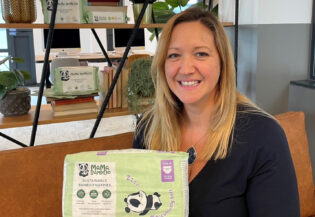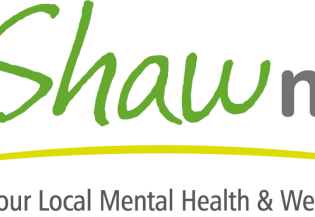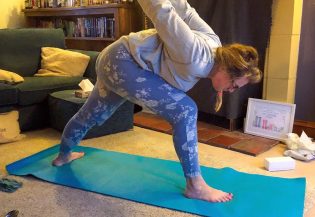10 Ways To Infuse Wellness Into Your Working Week
10 Ways To Infuse Wellness Into Your Working Week
Remember those catch-ups at work while you were waiting for the kettle to boil, about what series you’re watching at the moment, your evening plans or the weather? Maybe you’d pop out for a walk at lunch with a colleague, go straight to the pub on a Thursday for a drink with the team or catch up on each other’s weekends while you were waiting for others to arrive in the meeting room? These moments of respite are essential to your wellbeing, and it’s important to maintain them, even in an entirely virtual or hybrid working world. Here are ten ideas to infuse wellness into your working week.
1. Incorporate mindfulness meetings
Virtual meetings should be a safe space where employees can not only get on with business as usual, but also connect with colleagues and escape from to-do lists for a moment of respite. A great way to infuse this into your working week is by dedicating 15-30 minutes to a wellness routine, where everyone gets a chance to bring their full selves to the table. It also allows less confident people to have a voice in a team that’s often dominated by more extroverted people. It works by blocking out time for this meeting every week, and choosing a different team member to come up with the activity each week. At the beginning of the call, get the nominated team member to introduce the task, then spend 15 minutes guiding the team through it. This could be anything from meditation, journaling, quizzes to letter writing, a mini book club or whatever that person is inspired by. Once you’ve finished, get everyone to share a bit about what they wrote down or thought about.Here are a few ideas to start you off.
2. Get some fresh air
Going straight from bed to desk in the morning isn’t a natural way to start the working day. Try to get outside each morning, before you settle down at your desk. This might be a run, gym session, walk or even just popping to the shop. Try leaving your phone at home for this, or at least switching it off, so you can truly connect with nature and appreciate the small things – new flowers budding, the wind blowing the trees, the feeling of the sun’s warmth on your face. If getting outside isn’t an option, a morning yoga activity, meditation or reading session are all good options too.
Since working from home, lots of people have neglected their lunch breaks in favour of getting more ticked off their work task list. As tempting as this might be, lunch breaks are there for a reason, and essential for your overall productivity and wellbeing. Try to take your break around the same time every day, sit somewhere else to eat, head out for a decent walk, read a book, listen to a podcast or do whatever refuels you. We love sharing our favourite books and podcasts on our Instagram feed –follow us here.
3. Let everyone have a voice
To strengthen team relationships and boost wellbeing, it’s important that work is a safe space where everyone has a voice. Rather than simply having these good intentions, it can be infused within the structure of every working week. One way to do this is by blocking out half an hour every Monday morning for a virtual team meeting where everyone shares a bit of themselves. One person gets the ball rolling by answering the following four questions, before passing the baton onto another colleague to do the same, and so on until everyone has shared.
●“How are you, how was your weekend?”– Let everyone give an update on how they are and what they’ve been up to. Don’t be afraid to share how you’re truly feeling.
●“What three things are you focussing on this week?”– Telling your team what you’ve got on your plate this week not only motivates you to do the things you’ve said you’ll do, but also lets the team know how busy you are, in case they’re planning to add a few more tasks to your list!
●“What are you most excited about?”– This simple question is a way of making sure everyone is working towards their personal goals and doing something that works for them. This will help the individuals and the company grow.
●“Any roadblocks?”– A roadblock is something that could get in the way of progress being made. This might be that you’re waiting for a sign-off from someone else, you’ve got an unwell child who is off school and needs looking after during the day or you’re feeling swamped by a neverending to-do list. Sharing these roadblocks helps to create a culture of support within the team – it’s human nature to help each other find solutions to these challenges, and often prevents feelings of isolation and overwhelm.
During meetings, make an extra effort to give warmth and positivity to team members, so that they feel reassured that you are open and attentive to their words. Open gestures, nods, continued eye contact, smiles, fillers (“great”, “ahh”, “ok”, “mmm”) and a relaxed posture are all part of active listening. These may seem obvious, but it is amazing how often people speaking on Zoom are met by a sea of blank faces! Active listening also means reading the other person’s body language so you can time your response sensitively and appropriately. Someone may be uncomfortable or anxious and need to talk, or someone may be calm on the surface but frustrated underneath, and this is only leaking out via their nonverbal cues. For more tips on mastering the art of virtual communication,download this free eBook.
4. Learn to push back
Saying no is one of the hardest, yet most important, soft skills to learn, particularly if you’re someone who likes to please people. At the end of the day, if you say yes to something you can’t actually manage, you’re not helping anybody, and not prioritising your mental health. A good habit to get into when pushing back, even if you don’t feel confident inside, is to use downward inflection. This is when your voice comes down at the end of your sentences, making you sound more authoritative (download this free eBook‘How To Look & Sound More Confident’for lots of great tips on this topic!). Avoiding disclaimers is another good way to tackle this –this blog on self-sabotaginghas some really helpful advice for how you can replace disclaimers with firm statements.
5. Have a feel good float
Working from home often leads to feelings of stress and loneliness, particularly for those living alone. Delegate someone to be in charge of a ‘feel good float’ – a small sum of money which supports whichever team member deserves a pick-me-up that month. This might be a postcard, a pampering kit, some chocolate or whatever you think would cheer them up. ThePause Box by Mindis beautifully packaged and includes a notebook, personalised gift message, reflection card and 5-minute activity, encouraging staff to spend more time looking after themselves.
6. Celebrate small wins
Working from home on your own can often feel exhausting and lonely. Journalling and making a note of the small achievements are a good way to boost self-assurance and motivation. Rather than basing your sense of worth on other people’s validation, you can keep track of what you’re proud of today/this week/this month. Maybe you had a productive meeting, you finally heard back from a client or you started something that’s been on your list for months. No matter how small, if it’s something you’re proud of, it’s worth celebrating!
7. Stick to routine
In today’s remote working world where our desks are our dining tables, our bedrooms are our boardrooms, our laptops are jauntily balanced on books in an attempt to have good posture, our setup is perfectly angled to not show the washing in the background and our mute buttons are used to hide the screaming kids in the next room, it’s so important to stick to a routine. If your wake-up time, exercise, snack times, lunch and other activities happen at the same time pretty much every day, you’ll start feeling healthier and fulfilled. For hybrid workers, try to stick to certain days when you always go into the office, rather than mixing it up each week, so that you can plan everything else accordingly. For example, I go to the office on Tuesdays and Thursdays so I’ll go for a morning run on Mondays and Wednesdays, or…I go in every other Wednesday, so I’ll arrange an in-person team drink on that day. For help on forming these habits and finding a healthy work-life balance,Atomic Habitsby James Clear is a great read.
8. Try ‘The Pomodoro Effect’
Pre-pandemic, we wouldn’t go into the office and have a whole day without breaks. The Pomodoro Effect is a proven method that increases the quality of your work and makes you feel more rewarded – the idea is to take a 5-minute break every 25 minutes of work. Having breaks with your colleagues, where work chat is banned, is a great way to break up the day. Try calendar blocking too – this not only lets you focus on a specific task without distraction, but also lets your colleagues know your whereabouts. You don’t want your manager to call you midway through a yoga class!
9. Wind down
When work is home and home is work, it’s a constant battle to find separation between personal and professional life. Try to keep your routine as similar to how it would be in the office as you can. Spend the last half an hour of the day finishing off any last-minute tasks or replying to emails and shutting down your laptop (even just the act of closing it and hiding it away can put you in a different mental headspace!). Before you crash for the evening, do something different – like a walk, podcast or quick meditation exercise, to replicate a commute.
Make an effort to never have anything work related on your phone, so that when you shut down for the day, you put your non-work hat on. If you’re using a personal laptop for work-related tasks, a good way to separate them is by creating a new user login, which is entirely for work. In the same way, to make sure your phone doesn’t distract you during the working day, put it on the other side of the room to avoid the temptation of a quick scroll!
10. Have designated wellbeing days
More and more companies are starting to implement wellbeing days for their employees. This is designated time-off that an employee can use to recharge themselves, putting them in the right headspace for their jobs. You can choose what they’d like to spend your day doing – it might be a spa day, a walk in the countryside, a yoga retreat or a day of simply relaxing at home with no agenda.
By maintaining a routine, finding work-life balance, practising mindfulness and making sure your wellbeing is a top priority, you’ll find that you have more headspace and start to have a more positive working week. Start with one small change to your working week this month – perhaps make sure a lunchtime walk happens at least three times a week. Then, gradually add more to your routine at a pace that feels manageable – cue a more motivated, refuelled you! For more tips like this, sign up to London Speech Workshop’s monthly newsletter and check out their blog.
Social media tags
Facebook – https://facebook.com/londonspeech
Twitter – https://twitter.com/SpeechWorkshop
Instagram – https://instagram.com/londonspeech
LinkedIn – https://www.linkedin.com/company/london-speech-workshop/
YouTube – https://www.youtube.com/channel/UCb4Q262PBly0Dn5Ao-xyJGQ
Bio:

Hannah is the Marketing Executive at London Speech Workshop, an industry-leading communication training and coaching institute. Whether you’d like to feel more confident in meetings, capture your audience’s attention in a presentation, boost team morale or get the job of your dreams, the team of experienced communication coaches work with you on your unique goals and challenges. The proven Serlin Method™ uses a combination of modern psychology, performance technique and memorable tools, empowering people to be the best communicators they can be



































































































































































































































































